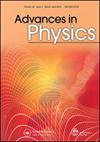对偶的键代数方法
IF 13.8
1区 物理与天体物理
Q1 PHYSICS, CONDENSED MATTER
引用次数: 85
摘要
基于键代数的概念,提出了对偶的代数理论。它以统一的方式处理经典和量子对偶性,解释量子对偶性与经典统计力学(或(欧几里得)路径积分)的低温(强耦合)/高温(弱耦合)对偶性之间的精确联系。它的应用范围包括离散晶格、连续介质场和规范理论。对偶性被揭示为特定于模型的键代数之间的局部、结构保持映射,这些映射可以被实现为酉变换,或者如果涉及规范对称,则可以实现部分等距。这种表征使我们能够系统地搜索任意系统大小、维数和复杂性的量子模型中的对偶性和自对偶性,以及任何允许传递矩阵或算子表示的经典模型。特别是,特殊的对偶性,如精确降维,紧急和规范降维对偶,解决规范约束,可以很容易地理解键代数的映射。作为一个新的例子,我们证明了在任意维数上,s2希格斯模型与扩展环码模型是对偶的。非局部变换,如对偶变量和Jordan-Wigner字典,是从键代数的局部映射算法派生出来的。这使我们能够在量子对偶和经典无序变量之间建立精确的联系。我们的键代数方法超越了经典对偶的标准方法,可以帮助解决晶格非阿贝尔模型长期存在的对偶变换问题。作为说明,我们提出了量子海森堡模型在任何空间维度上的新对偶性。最后,我们讨论了各种应用,包括相边界的位置,光谱行为,值得注意的是,我们展示了键代数对偶性如何帮助约束和实现任意数量空间维度的费米化。本文章由计算机程序翻译,如有差异,请以英文原文为准。
The bond-algebraic approach to dualities
An algebraic theory of dualities is developed based on the notion of bond algebras. It deals with classical and quantum dualities in a unified fashion explaining the precise connection between quantum dualities and the low temperature (strong-coupling)/high temperature (weak-coupling) dualities of classical statistical mechanics (or (Euclidean) path integrals). Its range of applications includes discrete lattice, continuum field and gauge theories. Dualities are revealed to be local, structure-preserving mappings between model-specific bond algebras that can be implemented as unitary transformations, or partial isometries if gauge symmetries are involved. This characterization permits us to search systematically for dualities and self-dualities in quantum models of arbitrary system size, dimensionality and complexity, and any classical model admitting a transfer matrix or operator representation. In particular, special dualities such as exact dimensional reduction, emergent and gauge-reducing dualities that solve gauge constraints can be easily understood in terms of mappings of bond algebras. As a new example, we show that the ℤ2 Higgs model is dual to the extended toric code model in any number of dimensions. Non-local transformations such as dual variables and Jordan–Wigner dictionaries are algorithmically derived from the local mappings of bond algebras. This permits us to establish a precise connection between quantum dual and classical disorder variables. Our bond-algebraic approach goes beyond the standard approach to classical dualities, and could help resolve the long-standing problem of obtaining duality transformations for lattice non-Abelian models. As an illustration, we present new dualities in any spatial dimension for the quantum Heisenberg model. Finally, we discuss various applications including location of phase boundaries, spectral behavior and, notably, we show how bond-algebraic dualities help constrain and realize fermionization in an arbitrary number of spatial dimensions.
求助全文
通过发布文献求助,成功后即可免费获取论文全文。
去求助
来源期刊

Advances in Physics
物理-物理:凝聚态物理
CiteScore
67.60
自引率
0.00%
发文量
1
期刊介绍:
Advances in Physics publishes authoritative critical reviews by experts on topics of interest and importance to condensed matter physicists. It is intended for motivated readers with a basic knowledge of the journal’s field and aims to draw out the salient points of a reviewed subject from the perspective of the author. The journal''s scope includes condensed matter physics and statistical mechanics: broadly defined to include the overlap with quantum information, cold atoms, soft matter physics and biophysics. Readership: Physicists, materials scientists and physical chemists in universities, industry and research institutes.
 求助内容:
求助内容: 应助结果提醒方式:
应助结果提醒方式:


